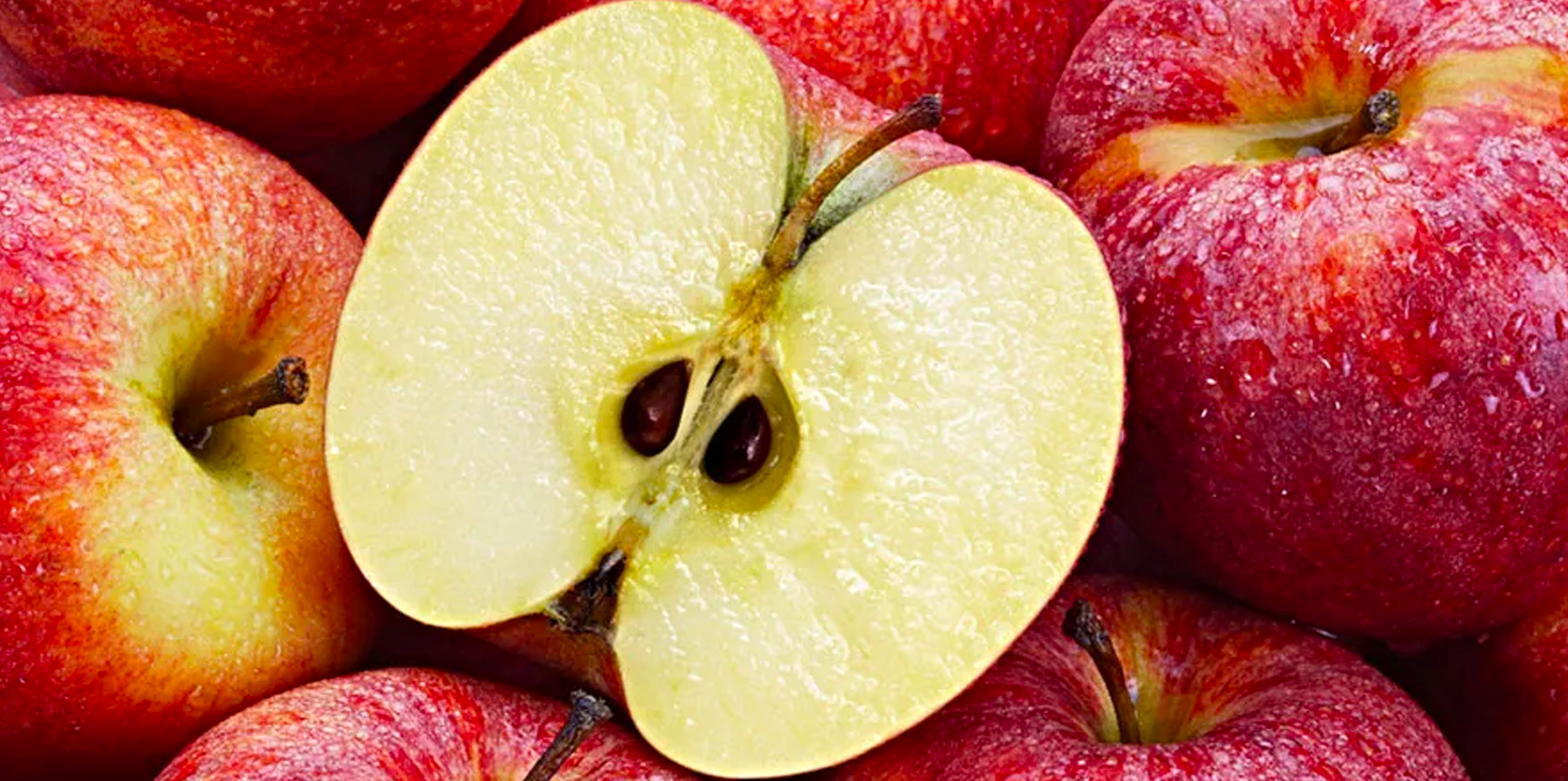A tasty food with tons of flavor, bell peppers are technically fruits that belong to the nightshade family.
These naturally crunchy and juicy foods can be eaten in a variety of ways.
Not only that but they are packed with a ton of nutrition that can benefit your health in numerous ways. They come in a variety of colors, each offering different kinds of nutrients to the body.
Did You Know?:Paprika is a dried and powdered form of bell pepper that is used as a spice in cooking with a smoky sweet flavor.
Table of Contents
Bell Pepper Benefits
In this article, we will explore what kind of benefits may occur when you add bell peppers regularly to your diet. Keep reading to find out all you need to know about the benefits of bell peppers.
1. Loaded with Nutrients
Apart from their spectacular flavor, bell peppers are high in several nutrients. Bell peppers contain a high amount of vitamin C (1). Additionally, they contain high amounts of potassium, folate, and vitamin B6 (2). Vitamin C, also known as ascorbic acid, helps your body form collagen, which is important for healthy skin and connective tissue (3). This vitamin is also vital for wound healing and immunity. Potassium is a crucial mineral that may help to reduce blood pressure and the risk of heart attack and stroke by keeping blood pressure under control (4).
Summary:Bell peppers are high in several nutrients, including vitamin C, potassium, folate, and vitamin B6.
2. They Contain Capsaicin
Capsaicin is one of the components in peppers that give them their sometimes spicy and unique flavor (5). In bell peppers, it is present in small amounts which the makes spice in them very mild. Believe it or not, capsaicin may provide analgesic properties for some. It has been used as a homeopathic remedy to treat burning pain. The research concludes that capsaicin may be effective in treating several conditions, including osteoarthritis, chronic musculoskeletal pain, sore throat, burning mouth syndrome, and more.
Summary:Bell peppers contain capsaicin, which is a natural compound that gives spice to foods. It has been found to help with treating pain and several medical conditions.
3. May Promote Healthy Hair
For some people, hair thinning, dandruff, split ends, and hair loss are a huge problem. Sometimes this can occur due to an unhealthy lifestyle, lack of proper nutrients, it can be genetics, or even due to certain medical conditions. Bell pepper may be the cure to these issues!
Consuming bell peppers has been suggested to support hair growth and improve blood circulation to the scalp (6). It has even been shown to strengthen the hair follicles on the scalp. This may be due to the amount of vitamin C and other nutrients they contain.
Summary:Consuming bell peppers is linked to stimulating blood circulation to the scalp and overall supporting hair growth and hair follicle strength.
4. Keeps the Skin Healthy
Nutrients in bell peppers can help keep the skin healthy, hydrated, and youthful-looking. Bell peppers are rich in vitamin C which helps the body form collagen. Collagen helps to keep skin firm and protects against cellular damage like the sun and environmental factors (7).
Bell peppers also contain antioxidants. Antioxidants can help decrease the number of free radicals in the body that damage cells throughout the body, including skin cells (8).
Summary:The vitamin C in bell peppers helps to form collagen in the body, which protects the skin, keeping it firm and preventing issues like sun and environmental damage.
5. They Contain Fiber
Bell peppers are a food that is a good source of fiber. For a 3.5 oz serving of raw bell pepper, there is about 1.2 grams of dietary fiber (9). Interestingly enough, the average fiber intake for US children and adults is less than half of the recommendations. Having a high intake of dietary fiber in the diet decreases the risk of developing heart disease, stroke, high blood pressure, diabetes, and obesity (10).
Additionally, increasing fiber intake benefits the gastrointestinal tract immensely (11). It has been linked to beneficial GI disorders including gastroesophageal reflux disease (GERD), ulcers, diverticulitis, constipation, and hemorrhoids.
Summary:Bell peppers are a great source of fiber, which can help decrease the risk of chronic diseases and can benefit the gastrointestinal tract.
6. Pepper Color Matters
There are several colors of bell peppers available on the market. The most common are green, yellow, red, and orange (12). Green bell pepper is less mature and in its unripe form compared to the other colors of bell pepper. It is also typically more bitter in flavor because of this. As they mature, they turn another color like yellow, red, or orange. Studies show that nutritional quality in bell peppers is related to the ripening stage of the fruit at harvest and post-harvest storage (13).
The more advanced the ripening stage of the bell pepper at harvest, the more superior nutritional quality and more antioxidants it contains (14). Red bell peppers were found to have the most nutrients (15). They have 11 times more beta carotene and twice as much vitamin C compared to green bell peppers. Red bell peppers also have more vitamin A.
Violaxanthin is found in yellow bell peppers, and capsanthin makes fully mature bell peppers red. Red bell peppers, which are the most nutrient-dense, also contain lycopene. All of these are important antioxidants that support overall health and help fight free radicals in the body.
Summary:Green bell peppers are considered unripe and in theory contain lower amounts of nutrients than the more colorful bell peppers like red, orange, and yellow. The deeper the color, the more nutrients with red bell peppers having the highest amount of beta carotene and vitamin C, as well as antioxidants.
7. Promotes Eye Health
Some of the most common vision impairments that may occur include cataracts and AMD, also known as age-related macular degeneration. These issues are especially prevalent in older adults. One factor that plays a huge role in the development of these diseases is nutrition. Bell peppers contain lutein and zeaxanthin, a potent antioxidant.
Lutein and zeaxanthin are carotenoid pigments that impart yellow or orange color to various common foods such as cantaloupe, pasta, corn, carrots, orange/yellow peppers, fish, salmon, and eggs. These compounds may improve eye health and are associated with reduced risk of cataract development and AMD (16).
Summary:Bell peppers contain lutein and zeaxanthin, a potent antioxidant that may improve eye health and decrease the risk of vision problems like cataracts and age-related macular degeneration.
8. High in Flavonoids
As mentioned, bell peppers are a great source of antioxidants, especially flavonoids. Flavonoids are compounds that are found naturally in many foods like fruits and vegetables. There are different kinds of flavonoids present in these foods and they all break down in different ways in the body. Flavonoids are known to have high antioxidant activity (17).
Antioxidants are necessary to prevent the formation and oppose the actions of free radicals in the body, which cause cellular damage to DNA, cells, and other biomolecules (18). Including bell peppers is a great way to help rid of free radicals and decrease the risk of diseases like cancer, diabetes, cataracts, heart disease, and more.
Summary:The flavonoids in bell peppers are a natural source of antioxidants, that can help reduce the amount of free radicals in the body and decrease the risk of diseases like cancer, diabetes, cataracts, heart disease, and more.
9. May Help With Inflammation
With the nutrients in bell peppers, it is no wonder that they have anti-inflammatory effects. Research suggests consuming foods like bell peppers may help to reduce the risk of arthritis and other inflammatory conditions (19).
The vitamin C in bell peppers helps to protect bone and cartilage tissues which can lead to decreasing the risk of issues like osteoarthritis. Beta-cryptoxanthin is a type of antioxidant that may help reduce the risk of rheumatoid arthritis (20). Beta-cryptoxanthin is also present in bell peppers which makes them a great dietary source to potentially help with inflammation and reduce joint pain.
Summary:The vitamin C and beta-cryptoxanthin that is in bell peppers may help decrease inflammatory conditions like arthritis and can potentially help with joint pain too.
10. May Promote Weight Loss
For those trying to lose weight, there are tons of different approaches and strategies that one may take. What you are eating in the diet is a huge factor in this. Bell peppers may be able to offer some help with this. Bell peppers consist of 80-90% water and fiber, which can make you feel more full and satisfied for longer after eating them.
As mentioned above, there are just around 30 calories in a 3.5 oz serving of bell pepper (21). They also do not contain any fat or cholesterol. For someone following a low-carb diet, this makes bell pepper a great food choice and potentially helps with weight loss.
Summary:Because bell peppers are low in calories and high in fiber and water content, they can help increase satiety and potentially help with weight loss.
11. May Promote Digestive Health
Studies conclude that consuming bell peppers may help support regular bowel movements (22). The amount of fiber in bell peppers can help remove waste from the body. Additionally, dehydration is a big contributor to constipation and can cause hardening of stools, making this an uncomfortable and difficult experience. Since bell peppers are high in water content, consuming them can help improve hydration and potentially help improve stools and prevent constipation.
Capsaicin, which is present in small amounts in bell peppers, may have benefits on the gastrointestinal system including having a digestive stimulant action, further promoting digestive health, and the prevention of constipation.
Summary:Consuming bell peppers may help to support regular bowel movements and prevent constipation, likely due to their fiber and water content.
Potential Risk Factors of Bell Peppers
Although bell peppers are generally part of a balanced diet, there is a risk of an allergy that some have reported, sometimes called a nightshade allergy (23). Peppers are part of the vegetable family that are called nightshades. Other foods in the nightshade category include potatoes, tomatoes, and eggplant. Nightshades have gained popularity in the social media world as causing inflammation and irritation to the gut. However, there is not enough evidence to confirm this.
Some people do find that consuming nightshade foods causes digestive issues and/or allergic-like symptoms. If you are someone who wants to test whether nightshades trigger some of these symptoms, it is recommended to do a nightshade elimination diet. Eliminate all nightshade foods from the diet for a few weeks and then slowly reintroduce them and observe any changes that occur. In general, for healthy individuals who have not had adverse reactions to nightshade foods, there is no reason to avoid them. If there is more of a severe reaction like a rash or breathing problems, this could be more indicative of an allergy and should be addressed with a medical provider.
Summary:Bell peppers are part of the nightshade family, which may cause adverse reactions for some but does not mean nightshades should be avoided completely.
Conclusion
Bell peppers are naturally crunchy, and hydrating, and offer numerous amounts of health benefits. Not only are they a great snack option, but they provide an abundance of nutrients like vitamin C, fiber, potassium, and more.
These tasty vegetables contain antioxidant and anti-inflammatory properties and can help support the health of different organs of the body like the eyes, skin, hair, and digestive system.
Pick up a bell pepper and start munching away today! They don’t disappoint.












